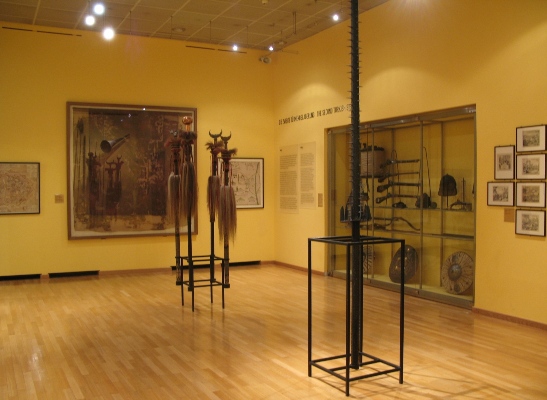VIENNA IN THE 16TH CENTURY
Princely Residence and Fortress City
In the 16th century, the medieval city of Vienna, with its 1,250 buildings and approximately 20,000 inhabitants, became a princely residence. Ferdinand I, who had become sovereign of Lower Austria in 1521, abolished Vienna’s special privileges. When the citizens of Vienna and the Lower Austrian nobility revolted, Ferdinand responded with a violent suppression.
At the same time, Vienna became a fortress on the border of two empires: after the death of the king of Hungary, Ferdinand I laid claim to the Hungarian crown and attempted to expand his authority throughout the region. In reaction, the Sultan of the Ottoman Empire declared war on the Habsburgs. In 1529, a massive army under Suleiman II marched to Vienna and laid siege to the city for three weeks. After Suleiman’s withdrawal, Vienna was transformed into a fortress in order to protect it from the continuing Ottoman threat. Mighty bastion replacec the old medieval town wall and remain there until the second half of the 19th century.

Panoramic view of the city of Vienna at the time of the First Turkish Siege 1529
In 1530 Niklas Meldemann, printer and publisher in Nuremberg, edited an anonymous template drawing, acquired in Vienna, in the form of the panorama show n here of Vienna as seen from St. Stephen’s Cathedral. He thus created on the one hand an important document of late medieval Vienna (city walls, city gates, suburbs), and on the other also supplied a remarkable pictorial report of the First Turkish Siege.
During the Reformation, the teachings of Martin Luther spread rapidly in Vienna. The majority of the city’s inhabitants soon declared their allegiance to the reformed confession. During the reign of Maximilian II (1564-76), Protestant preaching and servies were tacitly tolerated. His successors, however, brutally suppressed every manifestation of the new belief.
VIENNA IN THE 17TH CENTURY
The Counter-Reformation
In 1618, an uprising by Protestant Bohemian nobles led to the outbreak of the Thirty Year’s War. But Vienneses citizens loyal to the Emperor prevented the rebels from occupying the city.
War came to Vienna again in 1645 when Swedish troops conquered a bridgehead on the left bank of the Danube, only to be forced to withdraw a few days later. After the destruction of the Bohemian nobility and the subordination of the Austrian nobility, the territories possessed by the Habsburgs were “re-catholicised”. In the process, new churches and monasteries were erected throughout Vienna.
Catholic customs came to play a significant role in daily life. At the same time, the Emperor consolidated his powers. As a demonstration of his absolute rule, he organized magnificent and extravagant festivals in honour of himself. Music and theater began to shape the city’s cultural life. The Viennese court attracted members of the nobility from the Austrian provices, who were given high offices in the newly created central administration. The presence of this new noble elite forced the city’s traditional bourgeois citizenry into the background.
In 1600, approximately 35,000 people lived in Vienna and its suburbs. By 1680, this number had doubled.
The second Turkish Siege (1683)

In the second half of the 17th century, the Habsburgs’ claim to Hungary and Transulvania triggered a new war with the Ottoman Empire. In 1683, the Grand Vizier Kara Mustafa marched towards Vienna with an army of 200,000 men. While the inhabitants of the surrounding countryside sought refuge behind Vienna’s walls, Emperor Leopold I and his court fled the city.
On July 14th, the Turkish army laid siege to Vienna, surrounding the city with approximately 25,000 tents that stretched from St. Marx to Nussdorf. When the Prater islands and Leopoldstadt came under Turkish occupation, Vienna was completely cut off from its surroundings. As they bombarded the fotress walls with heavy artillery, the besiegers dug saps toward the bastions of the Imperial Court. Within the enclosed city, infectious diseases began to spread as supplies dwindled. At the beginning of September, massive explosions breached the bastions, and the city’s defenders had to mobilize their last reserves to ward off the assaults of the Janissaries.

The Viennese seemed to be on the verge of capitulating, when, on September 12th, the Polish King Jan III arrived with an allied army of 80,000 men. Launching their attack from the slopes of the Viennese woods, they defeated the Ottoman army in a massive battle to liberate the city.
